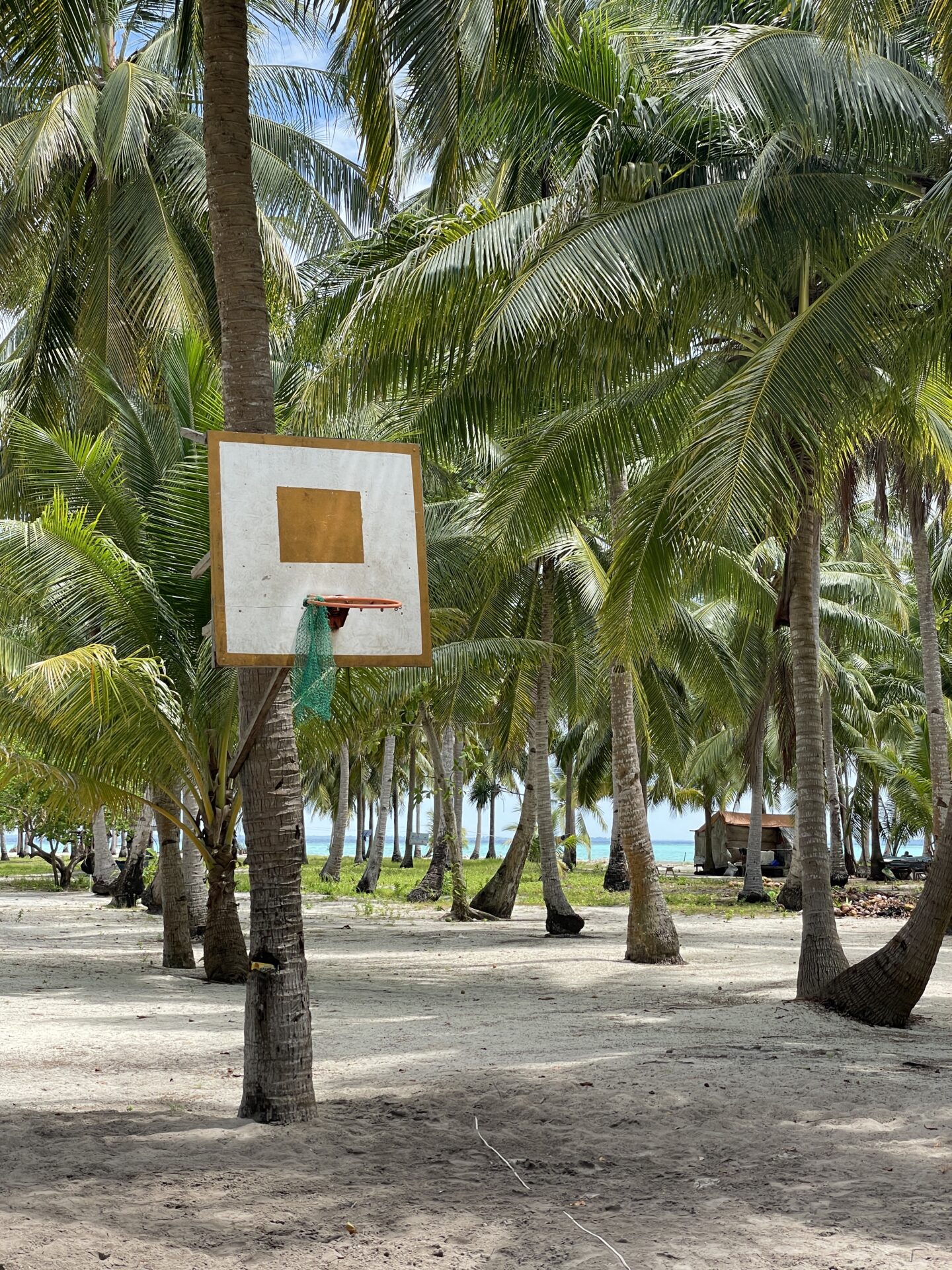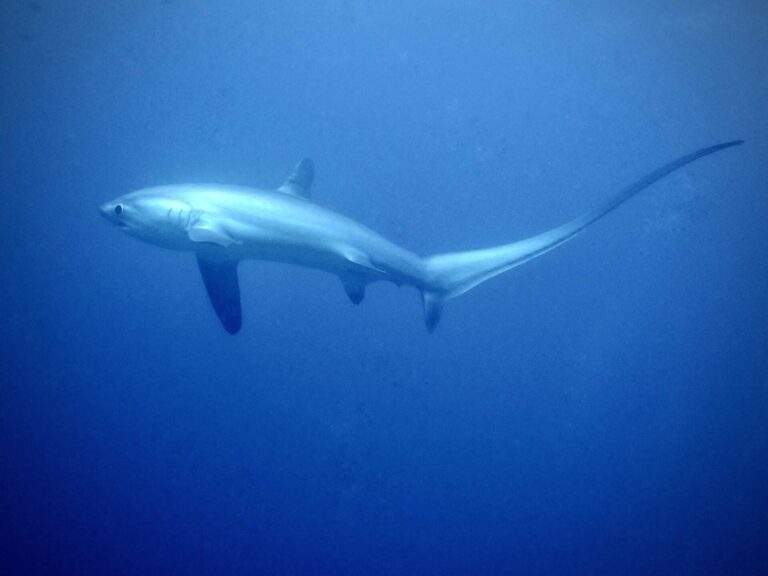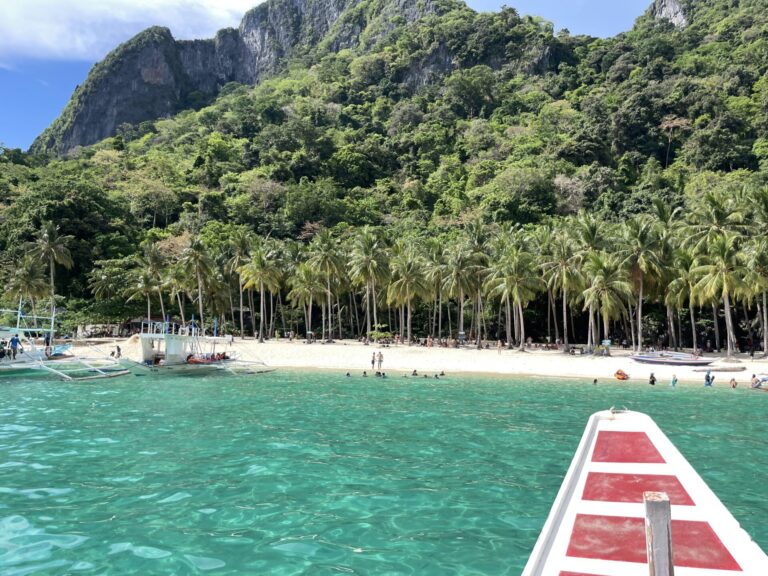My Complete Philippines Travel Guide: Everything You Need to Know Before Visiting in 2025
The Philippines was one of my biggest destinations this year. I spent almost three months there, living, working as a digital nomad, and exploring as much of the country as I could, and it’s definitely earned a special place in my heart.
It’s for sure one of the most beautiful countries I’ve seen so far. Turquoise water, white sand beaches, endless palm trees, dramatic limestone cliffs and some of the funniest, friendliest locals I’ve met in Asia. The Philippines is just awesome.
Over the past few months, I’ve written quite a few travel guides and blog posts about different parts of the country. This article pulls them all together into one big, no-nonsense Philippines travel guide, packed with tips from my own experience and a few things I wish I’d known before I arrived.
In a Rush? Here Are Our Favorite Hotels in The Philippines
⭐️⭐️⭐️ Angkla Beach Club – Click here for rates & availability
⭐️⭐️ Las Palmas Villas – Click here for rates & availability
⭐️ Casitas Santa Fe – Click here for rates & availability

Philippines Travel Guide – My Experience
I want to start this guide with a bit of my own experience, so you know what to expect from someone who’s actually spent almost three months in the Philippines.
The first half of my time was all on Siargao and I absolutely loved it. It’s by far my favorite island in the country, and you can’t change my mind.
Siargao has a great surf culture. I gave it a go a few times, but at this point I think it’s too late for me to learn. What really won me over, though, was the food scene. I’m a bit of a foodie, and Siargao’s is the best I’ve found in the Philippines. It reminded me of a mini Bali, but only in the good ways.
It was also perfect for working remotely, with great coworking spaces and a laid-back vibe that made it easy to put down roots for a while.
After Siargao, I started hopping around the country, spotting tiny tarsiers in Bohol, chasing waterfalls (and a few witch legends) in Siquijor, scuba diving with thresher sharks in Malapascua, hanging out in Cebu, and doing some of the most incredible island hopping I’ve ever experienced in Palawan, from Balabac to El Nido and Coron.
Overall, I had a well-rounded, unforgettable time in the Philippines. I think it’s a great destination for just about anyone, whether you’re coming for a quick beach vacation or planning to stay longer as a surf junkie or remote worker.
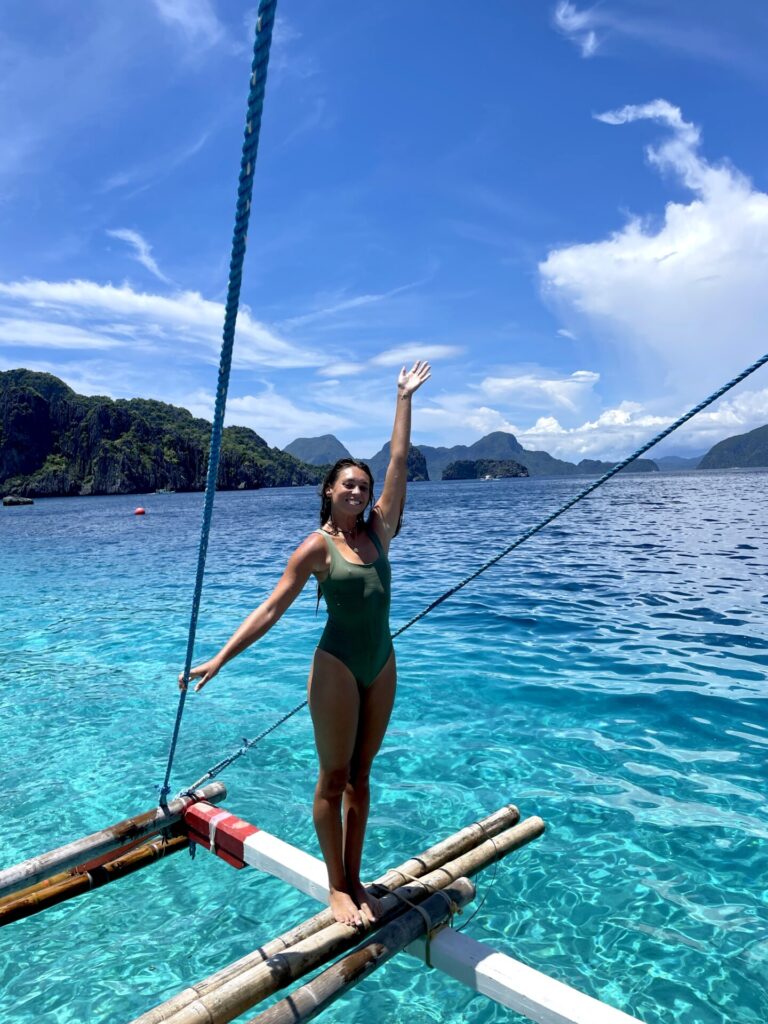
Why Visit the Philippines
The Philippines is, in my opinion, one of the most beautiful places in the world, at least if you know where to look.
Famous spots like El Nido, Coron, and Balabac are exactly as stunning as the photos suggest. Turquoise water in every shade, dramatic limestone cliffs, and island-hopping tours that leave you sunburned, salty, and smiling. The first time I saw Coron from the boat, I actually stopped mid-conversation because the view was that ridiculous.
But for me, the magic wasn’t just in the big-name destinations. Once I got off the beaten path, I found places like Siquijor, an island full of swimmable waterfalls, quiet beaches, and a fascinating mix of witch legends and local folklore.
Honestly, I’ve always felt the Philippines is a little less intense culturally compared to some other Asian countries, but Siquijor really surprised me. It had that extra layer of history and mystery I wasn’t expecting, and I loved it.
So yes, visit the Philippines, but don’t just tick off El Nido or Boracay and fly home. Eat at tiny roadside restaurants, rent a scooter, take wrong turns, and chat with the locals. In my personal experience, that’s when the Philippines shows you its real charm and those are the moments you’ll remember long after the flight home.

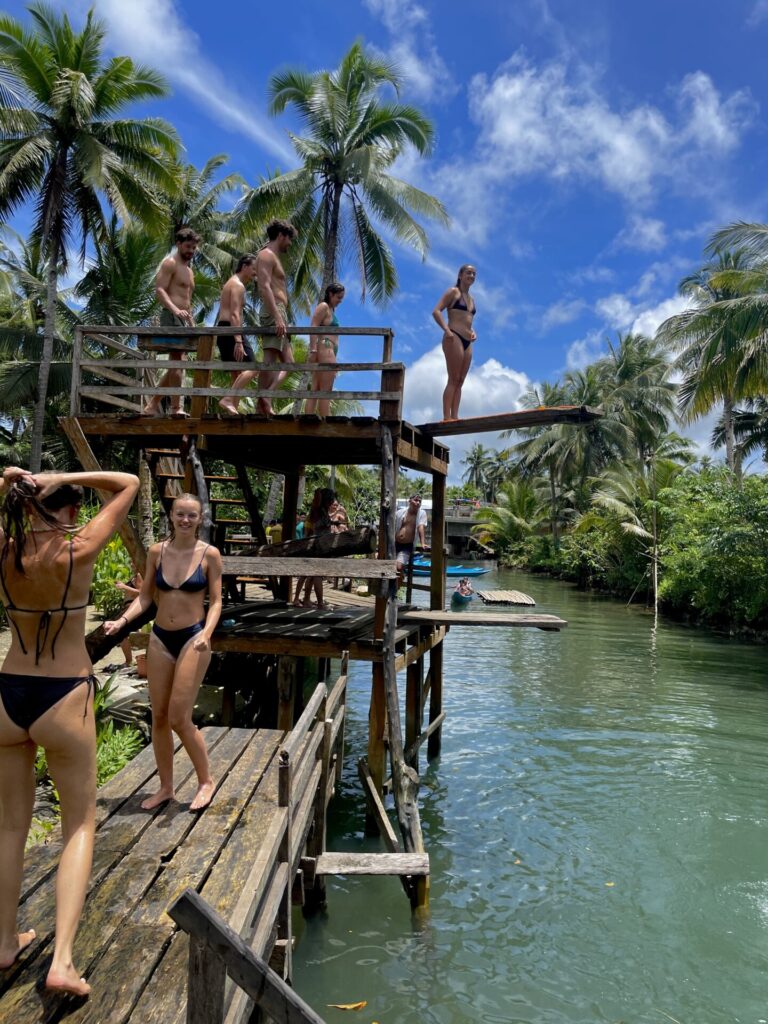


Best Time to Visit the Philippines
When to visit the Philippines is definitely an important thing for me to talk to y’all about. Knowing the dry and wet seasons can make or break your trip, and here’s the tricky part: not all islands follow the same weather pattern. There’s no summer or winter here, just dry season and wet season and they don’t happen at the same time across the country.
For this guide, I’m focusing on the islands I personally recommend visiting. There are thousands out there, but these are the ones I think most travelers will love.
Dry Season: November to May
For most of the Philippines, the dry season runs from November to May. This is the best time to visit if you want consistent sunshine and minimal rain. Outside of these months, you’re looking at the wet season with monsoons, heavy downpours, and a higher risk of travel disruptions.
During this dry season window, you’ll get great weather in:
- Palawan (including El Nido, Coron, and Balabac)
- Cebu
- Boracay
- Malapascua
- Bohol
- Siquijor

Dry Season: June to October
And then there’s Siargao, one of my absolute favorite islands, which flips the script entirely. Siargao’s best weather is from June to October, basically the opposite of everywhere else. These months mean blue skies, calmer seas, and minimal rain.
If surfing is on your list, you can find waves in Siargao year-round, but October and November are when things really pick up. That’s also when they host some big surf competitions and I’d love to go back and watch one someday.
When NOT to Visit the Philippines
This isn’t me saying “absolutely don’t come” during these times, but personally, I’d avoid them if I could.
One thing you should know is that Filipinos love traveling their own country. And honestly, I love that for them.
I’ve never seen domestic tourism quite like it anywhere else in Southeast Asia. But because of that, certain public holidays get absolutely hectic and busy, especially Christmas and Easter (Holy Week).
During these times, popular spots like Palawan, Siargao, and Siquijor can get insanely busy. Hotels book out well in advance, prices shoot up, and infrastructure can struggle with the extra demand.
I learned this the hard way! I was on Siquijor during Holy Week and we had multiple power cuts throughout the day because the system just couldn’t keep up with the number of visitors. Not fun.
If you can, plan your trip to avoid these peak holiday periods. You’ll save yourself the crowds and maybe a few hours without electricity.
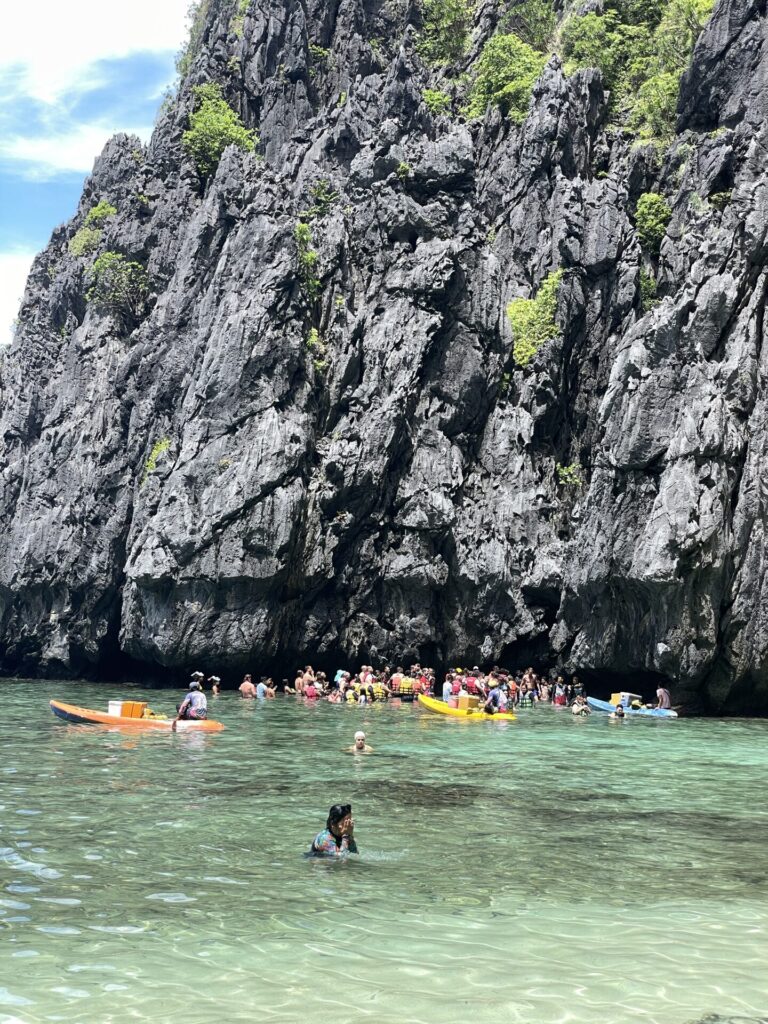
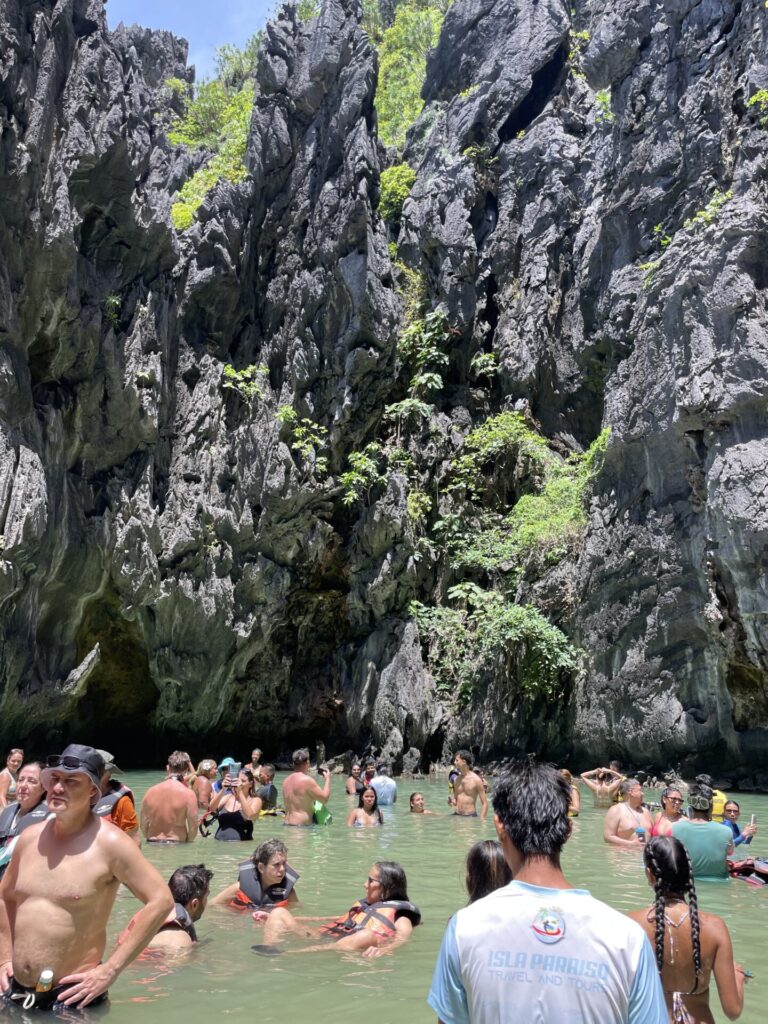
Entry Requirements & Visa
When I arrived in Manila, I didn’t have to do anything complicated, no online visa or piles of paperwork.
As a German passport holder (and my partner with a US passport), we both entered visa-free for 30 days. This is the case for many nationalities, so chances are you’ll have the same experience. You just show your passport, maybe answer a quick question or two, get stamped in, and you’re good to go. Honestly, it was one of the easiest arrivals I’ve had in Southeast Asia.
We extended our tourist visa in person, and that was also super easy. We did ours in Siargao, where there’s a small immigration/tourism office right by the pier. We literally just walked in, filled out a couple of forms, paid around $30 USD, and that was it, maybe ten minutes total. No stress, no hassle.
For comparison, we recently went through the same visa extension process in Indonesia, and it was way more complicated and time-consuming than in the Philippines.
Click here for the official visa website




How to Get Around the Philippines
I’ll be honest, getting around the Philippines isn’t exactly complicated, but it can be more of a hassle compared to other countries. The obvious reason is, it’s a country made up of thousands of islands, so getting from A to B often involves planes, ferries, or a mix of both.
Flying Around the Philippines
Flying is usually the fastest and easiest way to cover longer distances, especially between major spots like Manila, Palawan, Cebu, and Siargao. Yes, you can do most of the country by ferry (I’ve met travelers who did), but for these bigger jumps, I think flying just makes more sense.
I usually check prices on Skyscanner, but for domestic flights, it’s often cheaper to book directly with Cebu Pacific or Philippine Airlines. My advice is to book as early as possible. Domestic flights here can get expensive and even sell out if you leave it too late.
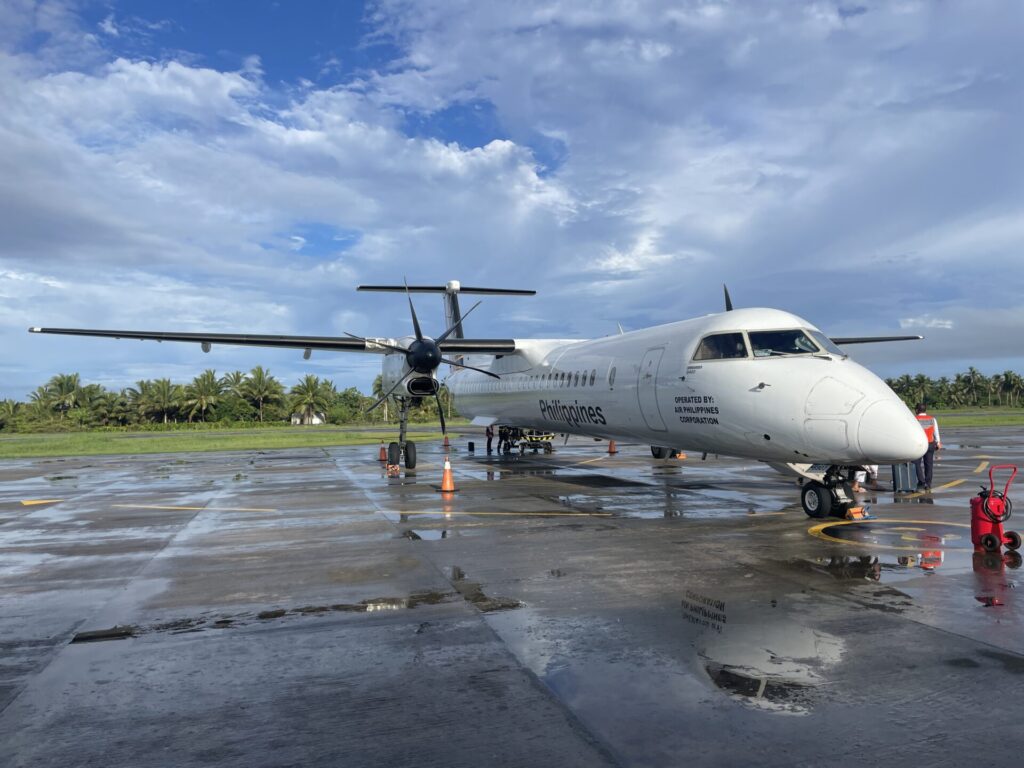
Taking Ferries
Ferries are cheap and used by locals all the time, but comfort levels can be… let’s just say basic. They also take a lot longer than flying. I mainly used ferries for shorter trips like Cebu to Bohol, Bohol to Siquijor, and Cebu to Malapascua. For those routes, ferries work fine and are pretty much your only option anyway.


Public Transport on the Islands
Many islands have some kind of public transport system, though quality varies. Cebu was the most organized in my experience. I used proper coaches with AC and comfortable seats to get around. In Palawan and Siargao, minivans are the main option, and they run to most popular spots. You can often book them online or through your hotel.

Rent a Scooter
Whenever I can, I rent a scooter. It’s my go-to for exploring, and the Philippines is a great place to get comfortable riding one. These days I rent long-term to keep costs down, and I’ll have a scooter pretty much the entire time I’m on an island.
On Siargao and Siquijor especially, having a scooter let me explore off the beaten path and find places I never would have seen otherwise. If you do rent one, please wear a helmet, have insurance, and ride safely, it’s worth it.

My Favorite Places in the Philippines
There are over 7,000 islands in the Philippines. Obviously, not all of them are tourist hotspots, but even with the ones that are, I still haven’t made it to all of them, even after spending three months here. What I can do is share my personal favorite places I’ve visited so far.
Siargao
I absolutely love Siargao. It has the coolest vibe and hands-down the best food scene in the Philippines, with Bali-like restaurants and cafes.
It’s so much fun to explore by scooter, especially the north of the island, and it’s amazing for surfing and even for working remotely. Definitely both thumbs up from me; this is my favorite place in the country.
Best place to stay in Siargao: Las Palmas Villas


El Nido
El Nido is super touristy, and the town itself feels like a built-up backpacker hub (which I don’t love). But I can’t deny that the nature here is some of the most beautiful I’ve seen anywhere in the Philippines with miles of untouched beaches, turquoise water, amazing marine life, remote islands, and those huge limestone cliffs.
Best hotel in El Nido: Angkla Beach Club


Malapascua
Malapascua is remote and still very local, and it gave me a rare glimpse into authentic Filipino island life. It was both humbling and eye-opening.
The island is beautiful and has some of the best scuba diving and snorkeling in the country. I saw thresher sharks while diving here, and reef tip sharks, turtles, and stingrays while snorkeling.
Best hotel in Malapascua: Hippocampus Beach Resort


Siquijor
I’ve mentioned this before, but the Philippines as a whole doesn’t have a deeply visible culture in the same way some other countries do.
Siquijor is the exception, it’s full of legends about witches, healers, demons, and folklore, which I found super interesting. Plus, it has some of the best waterfalls in the Philippines.
My top place to stay in Siquijor: Coco Grove Beach Resort

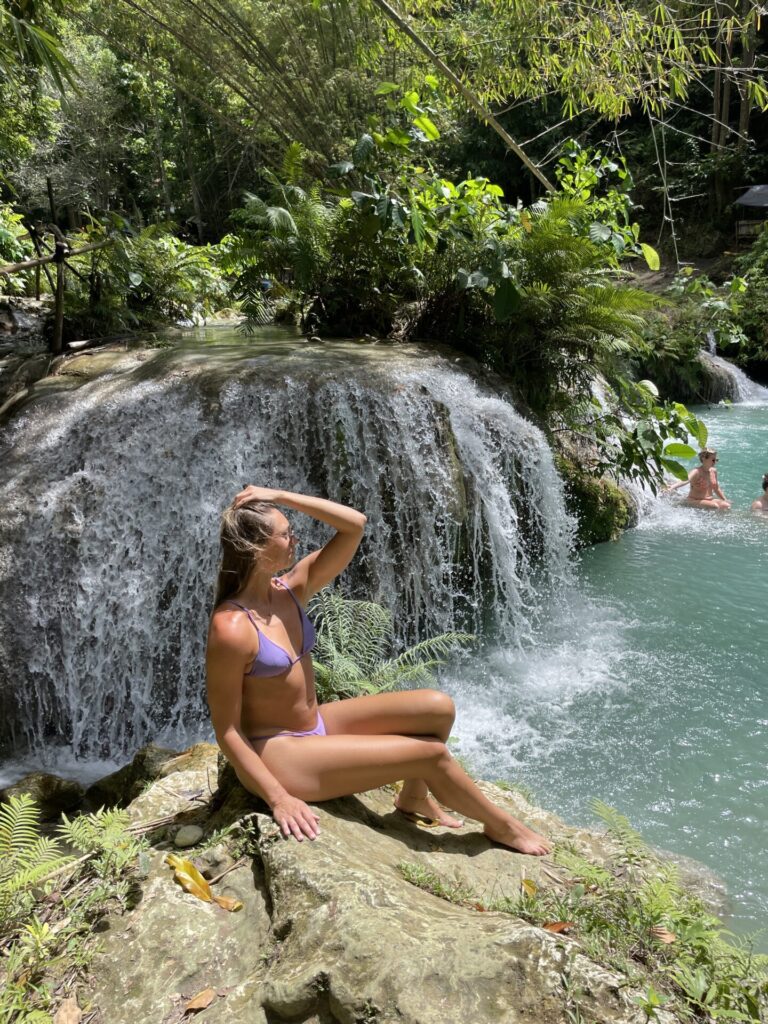
Balabac
Balabac is a group of remote islands in the south of Palawan. It felt like an off-the-beaten-path, rural version of the popular Coron-to-El Nido expeditions. It was a bit of an adventure to get there, but the scenery was just amazing and absolutely worth it.


Best Things to Do in the Philippines
- Coron to El Nido Expedition: A 3-day, 2-night island-hopping trip that ended up being one of my biggest highlights in the Philippines. I did it right at the end of my trip and couldn’t believe I’d waited so long. The scenery along the way is just incredible.
- Island Hopping in El Nido: If you’ve already done the big expedition, you can skip this. But if not, Tour A and Tour C are absolute musts with epic snorkeling, hidden lagoons, and some of the best beaches in the country.
- Remote Island Hopping in Balabac: The raw, off-the-beaten-path version of the Coron–El Nido route. Fewer tourists, rougher edges, and way more adventure. I loved every minute of it.
- Surfing in Siargao: The island’s surf culture is unmatched, and it’s my favorite place in the Philippines for both the waves and the overall vibe. Perfect place to learn or just enjoy the scene.
- Rope Swing at Cambugahay Falls, Siquijor: The most beautiful waterfall I saw in the Philippines. I jumped off the rope swing about ten times, felt like a kid again and had the best time.
- Diving with Thresher Sharks in Malapascua: I’m not sure you can do this anywhere else in the world. It was one of the best scuba dives I’ve ever done. I went with Devocean Dive Center, and they were fantastic.
- Meeting the Tarsiers in Bohol: These tiny primates are ridiculously cute, and the sanctuary I visited does amazing conservation work. Not many places let you see them up close like this.
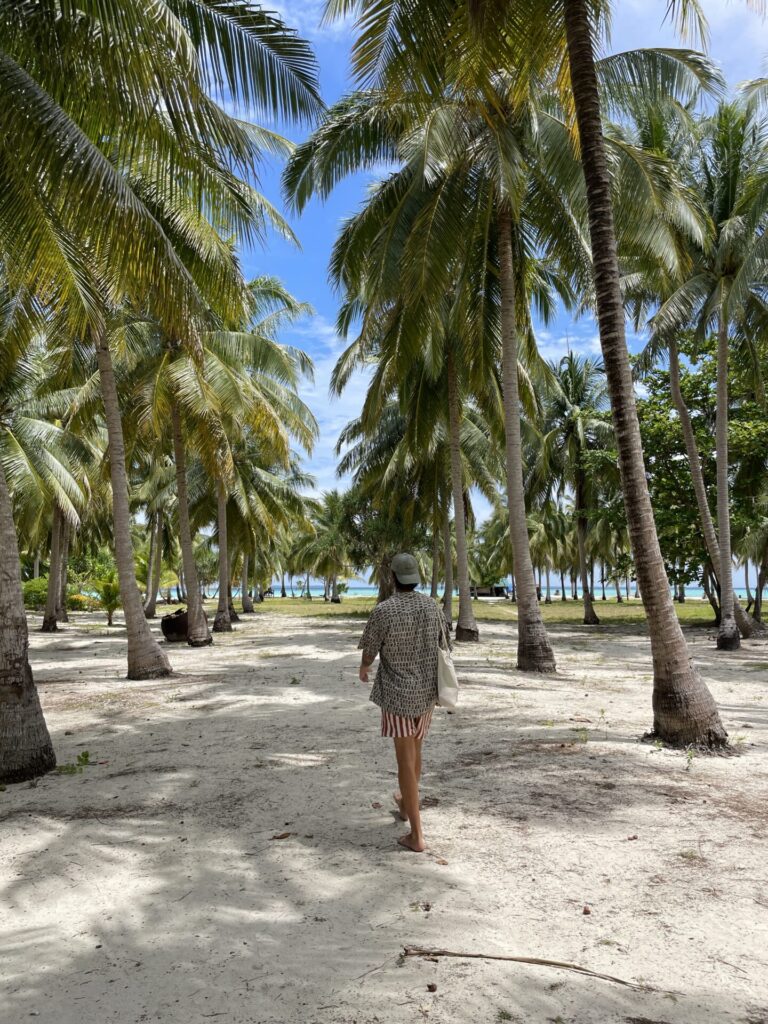
Money & Costs of Travelling the Philippines
One of the most common questions I get, both from readers and friends, is, “How much does it cost to do all of that?” And honestly, my answer is always the same: it depends.
I travel slowly, which means I get better deals on stays. I’m not in 5-star resorts; I usually rent smaller villas or apartments, and often long-term, which drops the nightly rate a lot.
I mix local food with the occasional international meal, and I usually have a scooter rental for weeks at a time instead of paying daily rates. So my personal spending isn’t really the same as someone on a fast-paced 2-week Philippines itinerary.
Still, here’s a rough idea based on my own experience and what you might expect depending on your travel style. These are per person, per day averages (not including flights).
Click Here: Full Philippines Cost Breakdown
| Travel Style | Accommodation | Food & Drinks | Transport | Activities & Tours | Daily Total |
| Backpacker | $10–20 | $5–10 | $3–6 | $5–15 | $25–50 |
| Mid-Range | $25–60 | $10–20 | $5–10 | $15–30 | $55–120 |
| Luxury | $100–250+ | $20–50 | $10–25 | $30–80 | $160–400+ |
💡 My personal budget: I’d call it a mix between backpacker and flashpacker, somewhere in the $35–50 per day range. For a full month (excluding flights), I spent around $1,200–1,500 USD.
Quick tips to save money in the Philippines:
- Book longer stays since many villas or apartments will give steep discounts for a month or more.
- Eat at carinderias (local eateries) for meals under $2.
- If you’re staying on one island for a while, rent a scooter by the month instead of the day.
- Group activities with other travelers can be cheaper, split boat tours or private van hires.

What to Pack for the Philippines
- Swimwear: A no-brainer. Snorkeling, island hopping, and swimming will follow you everywhere you go.
- Sunscreen: Especially in the dry season, you’ll be outside a lot. Weirdly, the times I’ve been burnt the most were on long scooter rides.
- Mosquito repellent: Some places (like Balabac) are basically mosquito central. I swear by the brand Off, which you can buy everywhere in the Philippines, it worked best for me.
- GoPro or action camera: There are endless boat tours, snorkeling trips, and water activities. I missed out on a lot of great pictures because I didn’t bring mine, don’t make my mistake.
- Dry bag: Same reason as above, so many water and boat activities. A dry bag will save your phone, wallet, and camera more than once.
- Reusable water bottle: The Philippines sadly has a big trash problem, and I saw plastic everywhere. Don’t make it worse and bring your own bottle. Most hotels have refill stations.
- Small daypack: Perfect for scooter trips, boat tours, and hikes. I always had mine for water, snacks, and a light rain jacket.
FAQs About My Complete Travel Guide Philippines
Are the Philippines worth visiting?
100%. I loved my time there, and they’re definitely worth visiting. Just keep in mind, this is a destination where island hopping, snorkeling, surfing, and beaches are the main events. Don’t expect much culture or a huge variety of activities beyond that, but for me, that’s more than enough.
What is the best Philippines itinerary?
For me, a trip that includes Coron, El Nido, and Siargao is the sweet spot. But I’ve put together a full Philippines itinerary you can check out for more ideas.
Are the Philippines expensive?
They don’t have to be. My monthly cost was around $1,300 USD and that’s as a digital nomad on a smaller budget. Of course, if you stay in luxury resorts and eat in upscale restaurants, you can easily spend much more.
What are the best hotels in the Philippines?
I’ve only stayed in a handful of upscale places, but two standouts for me were Las Palmas Villas in Siargao and Angkla Beach Club in El Nido.
Final Thoughts on Visiting the Philippines Travel Tips
Putting together this Philippines travel guide turned out to be harder than I thought, but I’m happy with how much useful info I’ve managed to pack in here. Of course, there’s always more to say, I could probably write about these islands for weeks, but if you want more details, my Philippines section is full of guides for every island and spot I’ve visited.
If I had to sum it up, I’d say this: sort out your visa if you need one, try to come in the dry season, book your flights and transport early, and then just get out there and explore.
The Philippines is so much more than a beach resort. Take the less obvious route, rent a scooter, skip the cookie-cutter tours, eat at the tiny local spots, and actually connect with the people.
Some of my best memories here came from going completely off the beaten path, from wrong turns that led to hidden beaches, long scooter rides with no plan, and meals that were as memorable for the company as for the food.
It’s those moments that stuck with me long after I left, and I think that’s what the Philippines is all about.
Check Out My Other Palawan Guides
Best Beach Resort in El Nido Palawan: My Honest Hotel Review
Beaches in El Nido Palawan: My Top El Nido Beaches
Restaurants in El Nido: Where to Eat in El Nido Palawan
How to Get to El Nido Palawan: My Full Guide on How to Get to El Nido
Is El Nido Worth Visiting?: My Honest Review
El Nido or Siargao: My Honest Comparison
El Nido Itinerary: My 4 Days in El Nido Travel Itinerary
Check out all my Siargao Guides
Hotels in Siargao: Where to Stay in Siargao Island Philippines
Cafes in Siargao: The 13 Best Cafes in Siargao
Food in Siargao: The 12 Best Siargao Restaurants
Coworking in Siargao: My 6 Favorite Coworking Spaces & Cafes to Work from
Check Out My Other Siquijor Guides
Siargao or Siquijor: Siargao vs. Siquijor My Ultimate Comparison
Cafes in Siquijor: My 6 Best Cafes in Siquijor
Restaurants in Siquijor: My Top 9 Siquijor Restaurants
Best Time to Visit Siqujor: When is the best time to visit Siquijor
How to Get to Siquijor: How to Get to Siquijor Travel Guide
Siquijor Hotels: Where to Stay in Siquijor Island
Check Out My Philippines Travel Guides
Philippines Travel Guide: My Complete Guide to the Philippines
Philippines Itinerary: My Perfect 2 Week Philippines Itinerary
Travel Insurance Philippines: My Go-To Travel Insurance
Philippines Cost Breakdown: How Much I Spent in the Philippines
